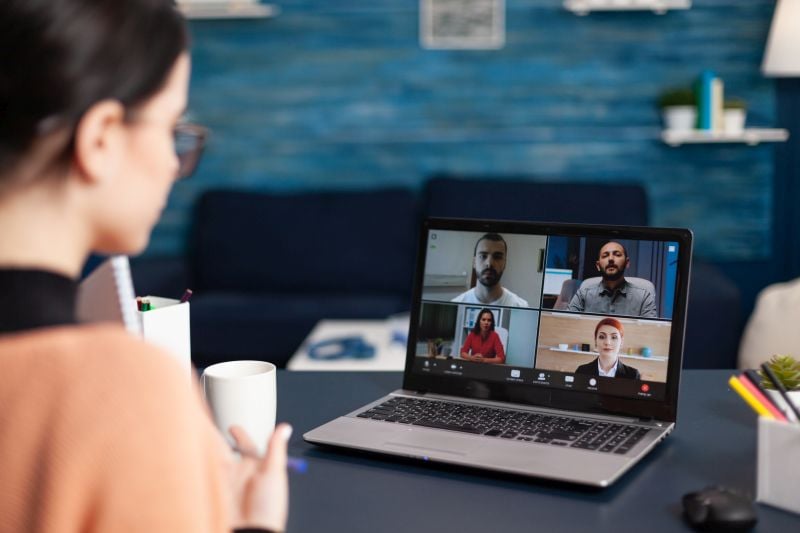
Latest HR News: HR and Employee Experience, Hybrid Working, HR Technology, and More...
Read on to stay up to date with the latest trends and developments in the world of HR.
HR Experience
How HR Professionals Can Use an Individual Development Plan

Human resource professionals who are not as dutiful about mapping their own career paths may be missing opportunities to help themselves advance. An Individual Development Plan - commonly known as an IDP - can be a helpful tool for keeping your professional growth on track.
Quoted in this SHRM post, Mark Herschberg, author of The Career Toolkit: Essential Skills for Success That No One Taught You and co-founder of a career development program at the Massachusetts Institute of Technology says, “Even if you’re in the right job at the right company, you’re probably hoping to grow,”. Adding “You’ll need a plan to do that.”
You will learn that the first step to creating an IDP is usually to complete a questionnaire that will ask about your career goals and how you plan to achieve them. It may also ask you to identify your professional weaknesses and what steps you will take to overcome them. For the process to be effective, your responses should be honest and realistic.
Click here to see how HR professionals can get the most out of the IDP process.
How Data is Changing HR at Microsoft, Walgreens, and Morgan Stanley
According to data collected between October and November 2020, 81% of Microsoft employees who did not receive support from management reported being dissatisfied. 42% reported not feeling as productive as they were prior to the pandemic. Employees’ work-life balance dropped by 13% between April and November 2020.
In response, Microsoft initiated a number of initiatives to improve the HR and employee experience of work.
Click here to discover what they were.
Employee Experience
The 4 Elements of a Fair Employee Experience - and How to Provide One (Gartner research)

Findings by Gartner show organizations must be fair to all of their employees to drive better performance and successful outcomes. That's why more employers are focusing on creating a fair experience for their employees, but only a small number of employees say they work in a place that is highly fair.
Gartner believes that executive leaders should ensure the workplace is fair by asking the following questions: Are employees kept in the loop? Do they feel supported? Are they being treated fairly? Are they being recognized for their efforts?
Find out more about creating a fair employee experience.
Technology plays a key part in supporting fair employee experiences - read The Ultimate Guide to Employee Experience (EX) Technology.
Worker Confidence Index: First Quarter 2022
HR Today, the online HR magazine for HR professionals, reports that almost two years of economic instability and damage caused by COVID-19 has begun to improve, with industries across the board beginning to recover and rehire. This has brought worker confidence up, even in industries that have been hit the hardest by the pandemic, like leisure, hospitality, and professional services, which have slowly begun to bounce back.
However, a recent astronomic rise in inflation reversed some of the progress businesses made as the world opened up. In the US, inflation rose to 8.5%, the highest rate since 1981. And when the stock market decreases, worker confidence tends to follow.
Get the HR Today Worker Confidence Index for First Quarter 2022 to find out more about the evolving state of worker confidence and how the first-quarter points to the year still to come.
Millennials Didn’t Find Good Jobs Until Their 30s (unlike boomers) - Discover What it Means for Colleges and Employers
How can we change the education-work pipelines so that they don't fail so many young adults, especially those of low socioeconomic status?
According to this post, the pathways to quality jobs are longer and more complicated for young adults, as postsecondary education has become more valuable in the labor market. These pathways are not equal for different races and genders.
That's the main point to take away from two new reports released Thursday by the Georgetown University Center on Education and the Workforce.
Hybrid Working
Capital One Sets Date for Hybrid Return to Office
Capital One will allow employees who have not been vaccinated against COVID-19 to return to the office in September, as long as they comply with the regular COVID-19 testing policies the bank will outline this summer, according to a memo from CEO Richard Fairbank. The McLean, Virginia-based firm has committed to a hybrid model that encourages employees to come into the office Tuesday through Thursday, although attendance on those days will not be mandatory.
Discover how Capital One intends to achieve a successful Hybrid working model.
Survey: On Average, Remote Workers Are About 20% Happier

A survey has found that the ability to work remotely is positively correlated with employee happiness. Fully remote workers reported a happiness level roughly 20% higher than those who worked in the office 100% of the time. The study also found that millennials were most likely to work remotely, with Generation Z not far behind. In addition, millennials’ happiness increased the most as a result of remote work. Commute times had a negative correlation with employee happiness, with commute times beyond one hour leading to a sharp decline in happiness.
How to Reduce Employee Frustration in Hybrid Work Models
According to Emilie Shumway, an editor at HR Dive, an online news and analysis magazine for HR professionals, the biggest adjustment for many people working from home may be the mindset shift that comes with working remotely or in a hybrid environment. Employees who have experienced the benefits of being able to work flexibly aren’t willing to give up those perks and return to the office full-time. As a result, employers must adjust their business models to keep employees happy by adopting hybrid work models. While customer experience is still important, companies now need to emphasize the employee experience. This means thinking about how a remote or hybrid work environment changes the way employees operate. What are their thoughts and feelings through every company touchpoint? What does their user journey look like in getting work done?
Click here to dive into more insights.
People Feel Disconnected From Company Culture. But is Hybrid Work the Problem?
40% of HR professionals surveyed by Gartner said that their culture budget had increased since the beginning of the pandemic. However, only 1 in 4 knowledge workers said that they felt connected to their organization's culture.
The disconnect that office workers are feeling is partially because the office is no longer the "most common, constant cultural experience," according to Gartner. However, Gartner also said that flexibility itself is not the problem; in fact, employees who had a high degree of flexibility in when, where, and how they worked were more likely to feel connected to their organizational culture compared to those who had very little flexibility.
Gartner has warned employers that making a return-to-office policy may not be a solution to culture disconnect and might cause many people to leave. Instead, Gartner suggests that employers should focus on empowering individual teams so they can create their own microcultures instead of relying on one macro-culture for the whole company.
Remote and Hybrid Teams Investing in Workplace Culture See Increases in Productivity and Profitability

A report by Omnipresent and Remote Social, found that nearly half of leaders of remote and hybrid teams are investing more in workplace culture due to the pandemic.
The study shows that managers are changing their thinking about what their companies and employees need to succeed in a remote or hybrid work environment, so that productivity and profitability will improve.
The report reveals that productivity, work-life balance, and communication are common pain points for managers, but managers are seeing tangible benefits from their investments in their teams. More than half of UK managers claim they have seen the most benefit in productivity and profitability, and 40% invest an average of US$51-100 per employee, per month in workplace culture. These teams are also benefiting from a good work-life balance and half of the teams have seen improved internal communication.
HR Technology
How HR Is Using Virtual Chat and Chatbots

The use of chatbots in HR is becoming increasingly popular as they can help to free up time for HR staff by taking on administrative tasks. It is predicted that by 2023, 75 percent of HR inquiries will be initiated through conversational AI platforms. Some of the ways in which AI can be used in HR include candidate competency assessments, interview scheduling, candidate engagement, employee self-service tools, virtual assistants, onboarding, employee career planning, candidate sourcing, and initial screenings.
Find out more about the big benefits of HR chatbots, chatbot use cases in HR, and best practices.
Also, read The Ultimate Guide to Conversational AI Chatbots for HR.



























